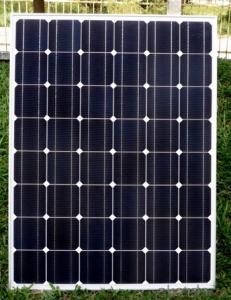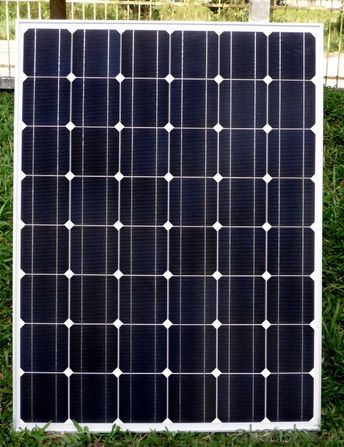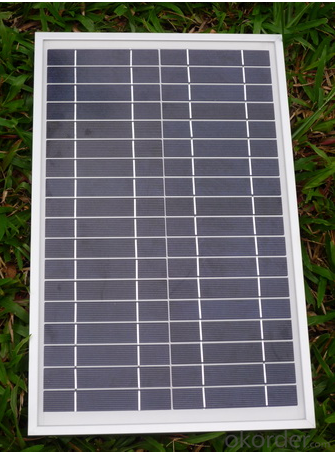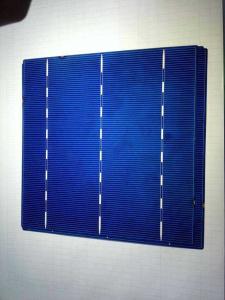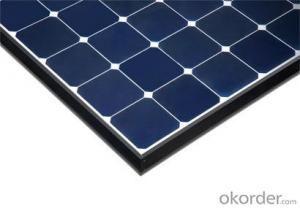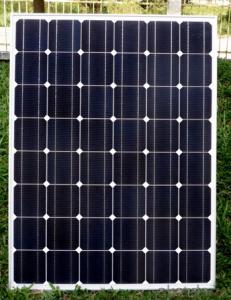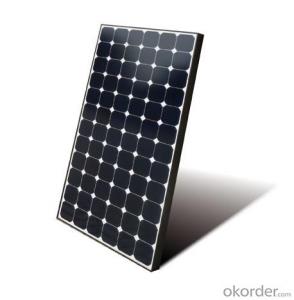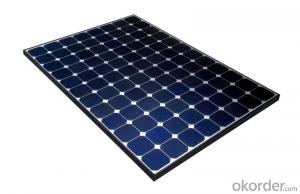Buy Individual Solar Cells:Poly Solar Panel 5W A Grade with 12 Years Warranty
- Loading Port:
- Shanghai
- Payment Terms:
- TT OR LC
- Min Order Qty:
- 100 watt
- Supply Capability:
- 1000 watt/month
OKorder Service Pledge
OKorder Financial Service
You Might Also Like
Specification
Poly Solar Panel 5W A Grade with 12 Years Warranty
Production description
Solar power is the conversion of sunlight into electricity, either directly usingphotovoltaics (PV), or indirectly using concentrated solar power (CSP). Concentrated solar power systems use lenses or mirrors and tracking systems to focus a large area of sunlight into a small beam. Photovoltaics convert light into an electric currentusing the photovoltaic effect.[1]
The International Energy Agency projected in 2014 that under its "high renewables" scenario, by 2050, solar photovoltaics and concentrated solar power would contribute about 16 and 11 percent, respectively, of the worldwide electricity consumption, and solar would be the world's largest source of electricity. Most solar installations would be in China and India.[2]
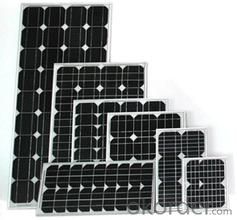
Application
Commercial
Industrial
Residential
Product Feature
12 years quality warranty 25 years performance output.
Free for less than 5 pcs sample requirement
Free to replace or repair or refund if products fail to conform to the PI requirement.
Packaging
28pcs into carton 2carton into pallets 28pallets into a 40ft container
Delivery
After 25 days for manufacturered goods as soon as we received full payment.
After 10 days for stock goods as soon as we received full payment.
- Q: Can solar cells be used for powering concert venues?
- Yes, solar cells can be used for powering concert venues. Solar cells, also known as photovoltaic cells, convert sunlight into electricity. Concert venues typically require a significant amount of energy for lighting, sound systems, and other equipment. By installing solar panels on the venue's roof or in nearby open spaces, the electricity generated can be used to power the venue. This not only reduces dependence on fossil fuels but also helps to lower energy costs and minimize the venue's carbon footprint.
- Q: How do solar cells perform in regions with high levels of air pollution?
- Solar cells tend to perform less efficiently in regions with high levels of air pollution. The particles and pollutants in the air can block sunlight from reaching the solar cells, reducing their ability to generate electricity. Additionally, air pollution can accumulate on the surface of the solar panels, further reducing their efficiency. Regular cleaning and maintenance of the solar panels can help mitigate the impact of air pollution on their performance.
- Q: Can solar cells be used on curved surfaces?
- Yes, solar cells can be used on curved surfaces. Advances in technology have enabled the development of flexible and bendable solar panels that can conform to curved or irregular shapes, allowing for their installation on various surfaces such as rooftops, vehicles, and even clothing.
- Q: Can solar cells be used for lighting?
- Yes, solar cells can be used for lighting. Solar cells convert sunlight into electricity, which can be used to power lighting systems. This can be done by directly connecting the solar cells to the lighting fixtures or by storing the generated electricity in batteries for later use. Solar-powered lighting systems are environmentally friendly and can be a cost-effective solution for outdoor lighting, street lighting, and even indoor lighting in areas with limited access to electricity.
- Q: What is the role of inverters in solar cell systems?
- The role of inverters in solar cell systems is to convert the direct current (DC) generated by the solar panels into alternating current (AC) that can be used to power electrical devices or be fed back into the grid.
- Q: How about the solar cell 156mm Mono-Crystalline?
- Solar Cell measure by 156mm is cut based on the special requirements for certain kind of use, but I am not sure what it is used for.
- Q: What is the lifespan of a solar cell?
- The lifespan of a solar cell varies depending on several factors such as the quality of materials used, manufacturer specifications, and environmental conditions. However, on average, most solar cells have a lifespan of around 25 to 30 years.
- Q: What are the different sizes of solar cells?
- Solar cells come in various sizes, ranging from small portable panels for charging devices to large-scale installations used in solar farms. The sizes of solar cells can vary based on the specific application and power output requirements.
- Q: How do solar cells compare to fossil fuels in terms of energy production?
- Solar cells are a cleaner and more sustainable source of energy compared to fossil fuels. While fossil fuels release harmful emissions and contribute to climate change, solar cells harness the power of the sun to generate electricity without any pollution. Although fossil fuels have been the dominant source of energy for decades, solar cells offer a viable alternative that is continuously improving in efficiency and cost-effectiveness.
- Q: Where can I get the most accurate information about solar cells?
- Don't trust whatever you search online, trust the book.
Send your message to us
Buy Individual Solar Cells:Poly Solar Panel 5W A Grade with 12 Years Warranty
- Loading Port:
- Shanghai
- Payment Terms:
- TT OR LC
- Min Order Qty:
- 100 watt
- Supply Capability:
- 1000 watt/month
OKorder Service Pledge
OKorder Financial Service
Similar products
Hot products
Hot Searches
Related keywords
